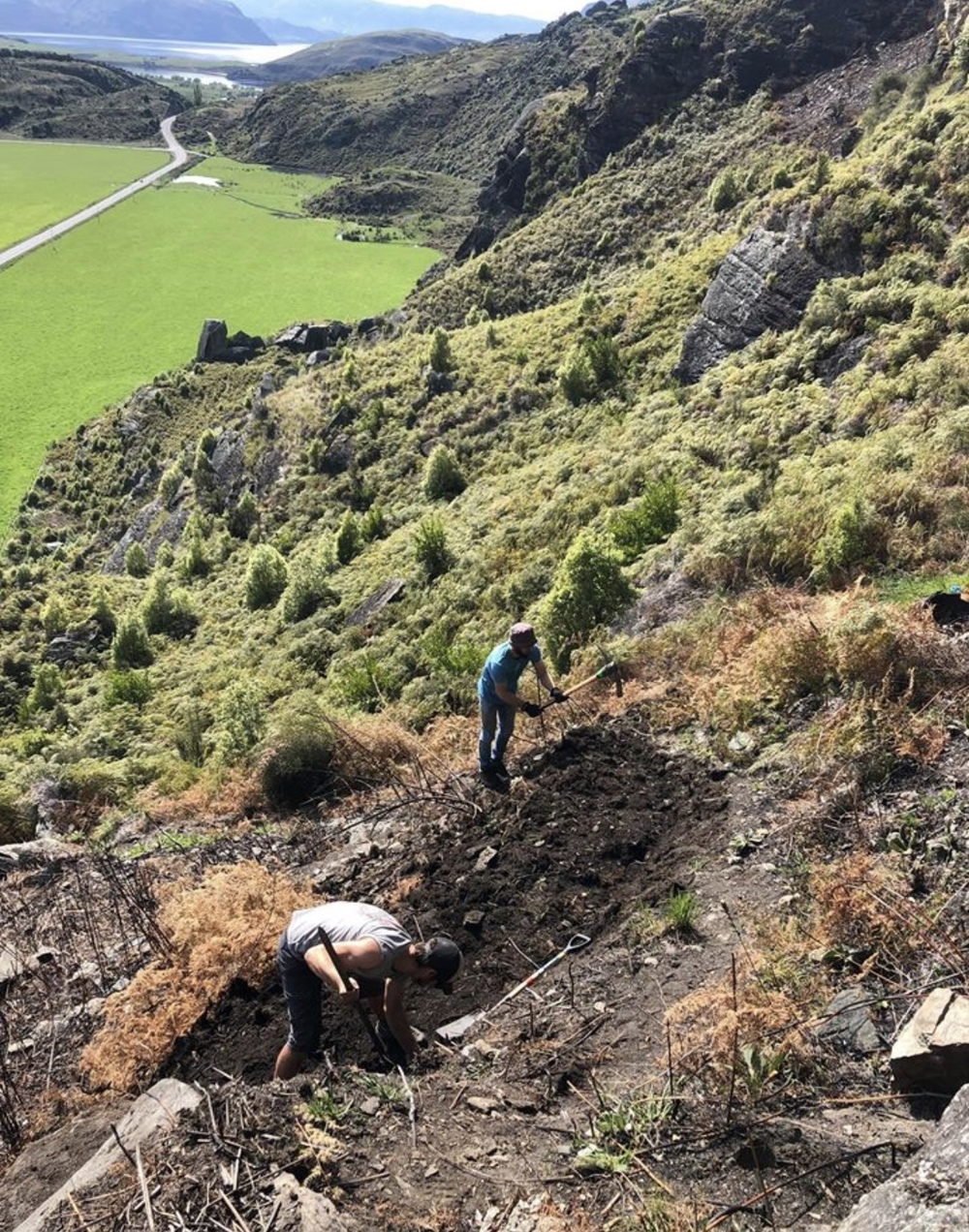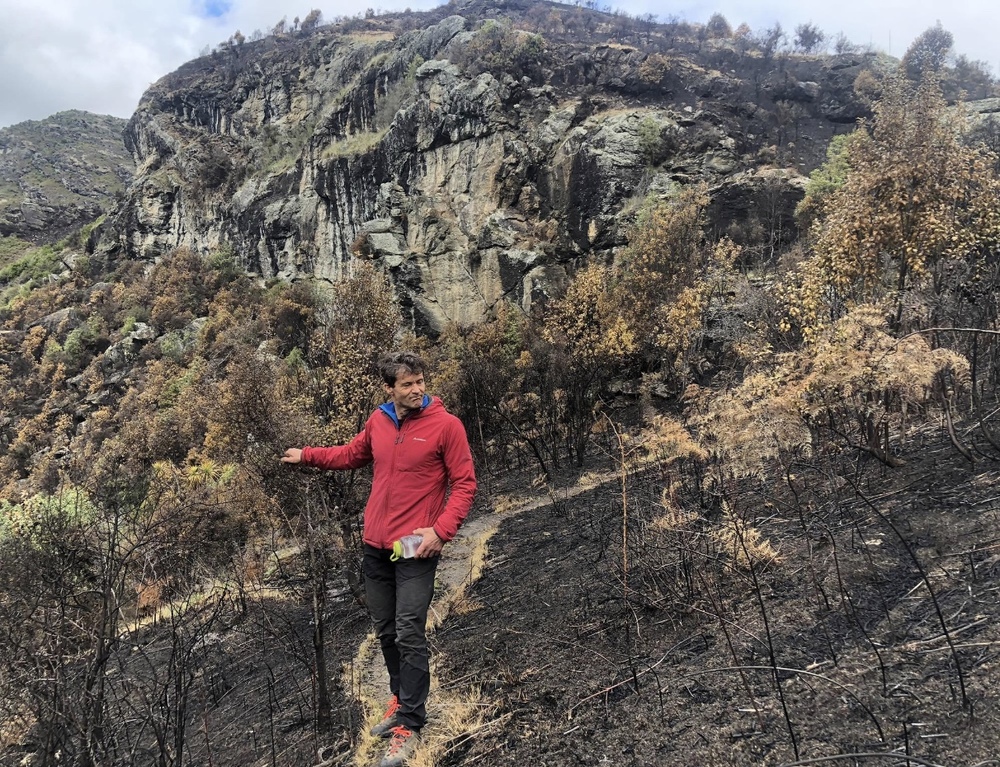Crags, characters, and conservation: the Wanaka Rock Climbing Club
Sue Wards
14 December 2019, 5:00 PM
 Jane Presto on a schist sport route at West Wanaka. PHOTO: WRCC
Jane Presto on a schist sport route at West Wanaka. PHOTO: WRCCA long-standing local club with an eccentric history has signed a significant new agreement with the Department of Conservation (DOC), allowing it access to local conservation land.
After a two year process, the Wanaka Rock Climbing Club (WRCC) has signed a ‘community agreement’ with DOC, allowing it to maintain public access to the rock climbing areas, and establish climbing routes while promoting conservation of the natural environment in and around the rock climbing areas. It’s a significant step, as some climbing areas around the country have closed in the face of concern about potential liability from land owners and managers.

DOC Wanaka seems to agree with the NZ Recreation Association’s view that the safety considerations around rock climbing are best managed by rock climbers themselves - traditionally an eclectic mix of characters with some serious practical skills.
DOC community ranger Kerie Uren said there are few formal agreements for rock climbing infrastructure on public conservation land, and this may be the first of its kind.
“We’re delighted to have secured access for rock climbers to conservation land around Wanaka, based on a partnership with DOC,” WRCC co-president Ed Nepia said.
The WRCC has about 50 paid up members, but its Facebook group has 1,800 members.
The club is described on its website as ‘a loose collective, reluctantly banded together to freely serve the interests of climbing in the Wanaka vicinity’. Its role is to work toward access to quality rock, while ensuring ‘care and respect for our lovely natural or rural spaces’. It also aims to establish and maintain a high standard of sports routes (bolted climbing routes) and infrastructure, and foster superior bolt-craft, safe practices, and ‘decorous crag etiquette’.

Club members during a working bee following the October scrub fire. PHOTO: Ed Nepia
The group’s Facebook page aims to provide a forum to connect the climbing community, as well as “raise a rabble to do the necessary housework, DIY and gardening and make the world a better place”.
The history of rock climbing in this area goes back to the 1970s, when two climbers took two weeks to clean and climb the Tombstone boulder (an obvious pinnacle at Hospital Flat, on the Mt Aspiring Road west of Glendhu Bay). Other climbing routes were established, but it took some time (and lots of bolts) before climbers considered Wanaka’s schist worthy of sport climbing - thanks largely to the efforts of a group of mountain guides who had moved here from Mt Cook.
“In 1990 Guy Cotter, Nick Cradock, Paul Aubrey, Glen Einam, and Clinton Beavan formed the nucleus of the Wanaka Rock Climbing Club, purchased a battery hammer drill, and Wanaka sport climbing was born,” co-president Bruce Dowrick writes on the club’s website.
The original club motto was “self elected, self important, but selfless” in the mission to develop and maintain rock climbing in this beautiful area.
Bruce’s club history recounts the development of various crags around the Matukituki Valley, including a much-told story which sums up an element of climbing humour, about Guy Cotter and Nick Cradock discovering a promising wall above Diamond Lake. “Ever the mountaineer, Nick announced 'I'm going to name this wall after me.' Guy agreed, and it's been known as Pencil Dick Wall ever since,” Bruce writes.
Crags continued to be developed and named, from the prosaic (such as The Far Side, Roadside, Riverside, Sunnyside, and Highside), to the more colourful (Sharon Stone, Rock Hudson, and Jimmy Cliff).

Long-term club member Bruce Dowrick surveys damage after the fire. PHOTO: Ed Nepia
The club published its first Wanaka guide to the crags in 1996; and the editions have continued - the current one is the seventh.
In the early 2000s, the high country leases which included most of the land used by climbers went through tenure review, and - as Bruce puts it: “In exchange for freehold title to the bits that cows, sheep, and swedes prefer, the high country farmers would give up the bits that tourists, skinks, kea, and climbers prefer.”
These new conservation and recreation areas were now managed by DOC, allowing for tracks, toilets, informative signs and a new status for the WRCC as a stakeholder and a recognised recreational group.
Kerie said DOC and the club signed a Memorandum of Understanding in 2010, which has been superseded by the new community agreement.
“We have a good relationship with the club and appreciate their support as the eyes and ears up the valley,” she said. “The club’s Facebook page is a useful tool for bringing hazards to the attention of other climbers.”
A recent example is from October, when a scrub fire around the Motatapu River affected a few of the crags. Some climbing gear fixed on the cliffs was destroyed in the fire, and access tracks were damaged.
Ed said the biggest impact was the loss of the vegetation club members had watched grow back over the past ten to 15 years. The area had previously been mainly bracken, but the first phase of native species regeneration had been going well until the fire.
Following the fire, 45 club members - including young members of the Cliffhangers Climbing Club - undertook a working bee around the damaged areas; moving debris, building steps, landscaping terraces, and generally having a good clean up.
“It is really heartening to see how much people care about this special place,” Ed said.
Other issues covered by the club’s agreement with DOC include the fixed climbing equipment installed by the club, and allowing the club to carry out track work (there are informal tracks to the crags but the club seeks to improve these tracks by bringing them up to a good standard, which will result in less erosion, Kerie said).
The agreement also includes re-vegetation of natives and predator trapping.
“The important thing for DOC is that any work undertaken on public conservation land is done under the agreement and anyone wanting to help/participate should contact the club. This includes putting in new routes,” Kerie said.
DOC has had issues with people putting routes up where the rock is considered ‘wahi taoka’, a special place by Ngai Tahu, such as the Obelisk-Kopuwai at the Kopuwai conservation area. There have also been instances where climbers have developed contrived routes and track work of a low standard; something the club seeks to minimise and control.
Ed said the new agreement is particularly significant given access has been denied to crags in some parts of the country. The WRCC has worked with the NZ Alpine Club as well as DOC to finalise the agreement,
Find out more about the club, which aims for a minimum of committee meetings and a maximum of fun, here.

